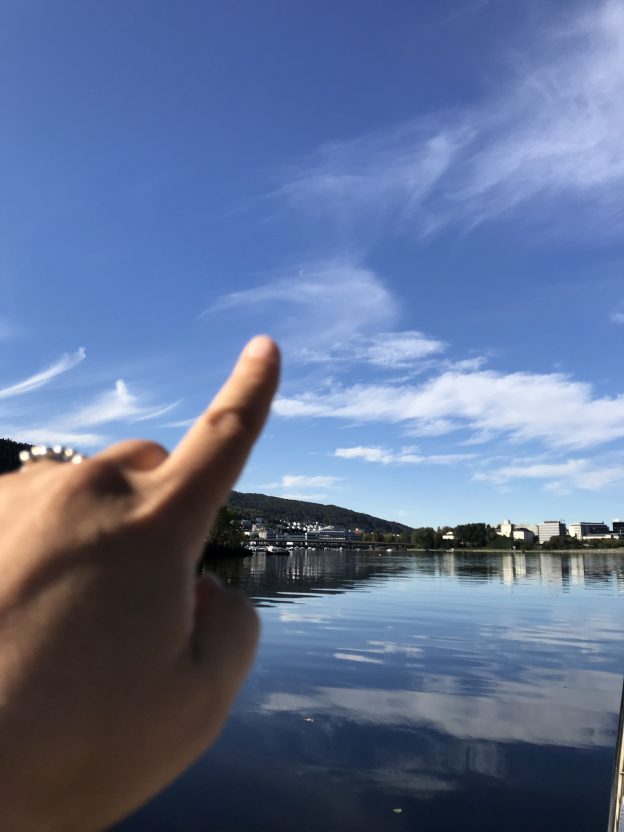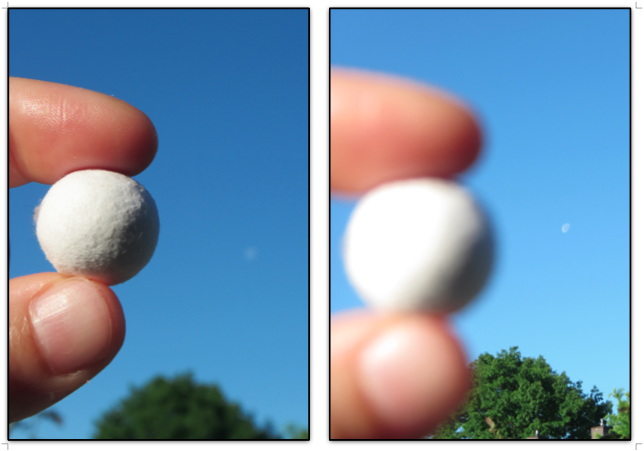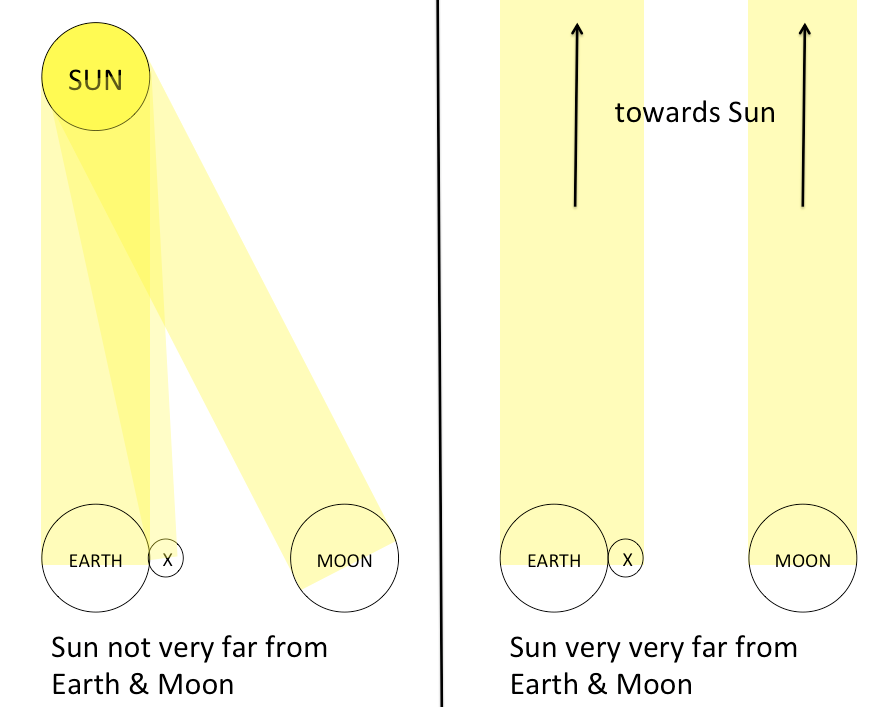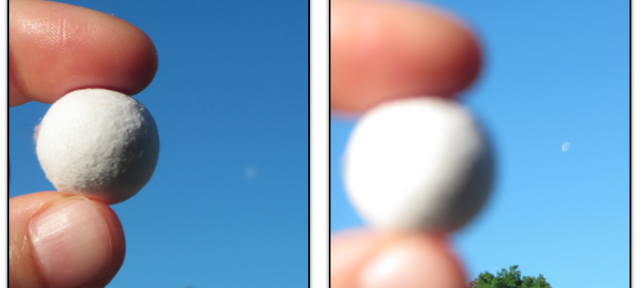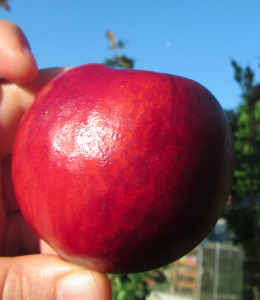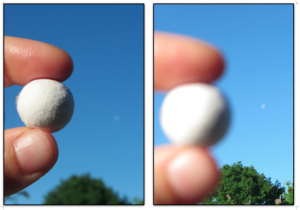The sun lights objects on Earth from the exact same direction as it lights the moon (see a thought experiment on that here). So far so not surprising, at least in theory. In practice, I still find it kinda amazing every time I notice.
Like this weekend, when I was “fishing” with two kids, 3 and 6 years old, who happened to be very keen observers. The 3-year old pointed out that the moon was visible in broad day light as she’d sometimes seen before. The 6-year old said that only the part of the moon that was lit by the sun was actually visible. And when I pointed towards the moon, I noticed that my ring actually nicely showed parts of the spheres illuminated from the sun, and other parts in the shadows. Just like the moon! Thus the two pictures, one focussed on my hand above, the other one focussed on the moon below. This phenomenon can very nicely demonstrated with any kind of sphere!
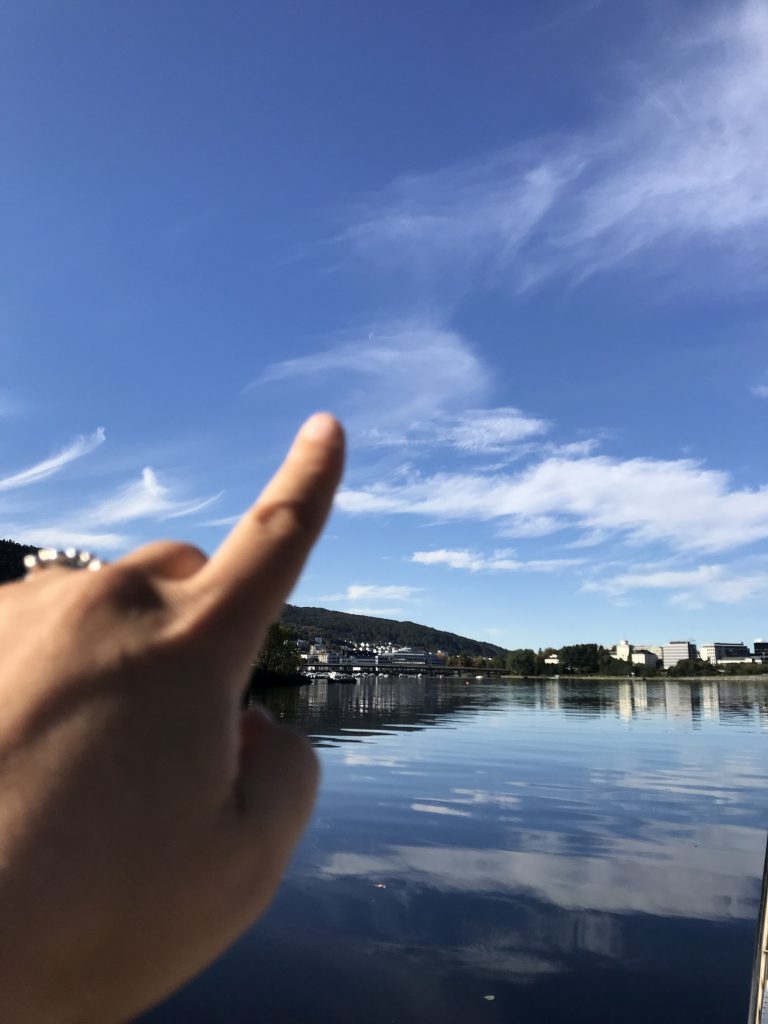
The 3-year old also pointed out that the clouds were very pretty, but looked as if it was very windy up there.

And — much to my delight — that the mountains seemed to be moving! At least when not looking at the mountains directly, but rather at their reflection on the water. And the 6-year old added that the houses seemed to grow and shrink with every wave on the water that went through their image.

Luckily for us, there were all kinds of different waves — from a completely calm lake in earlier pictures, to longer wavelengths from the wake of a boat above, to also very short wavelengths from people dangling their feet in the water. So much fun to do wave watching with kids!

